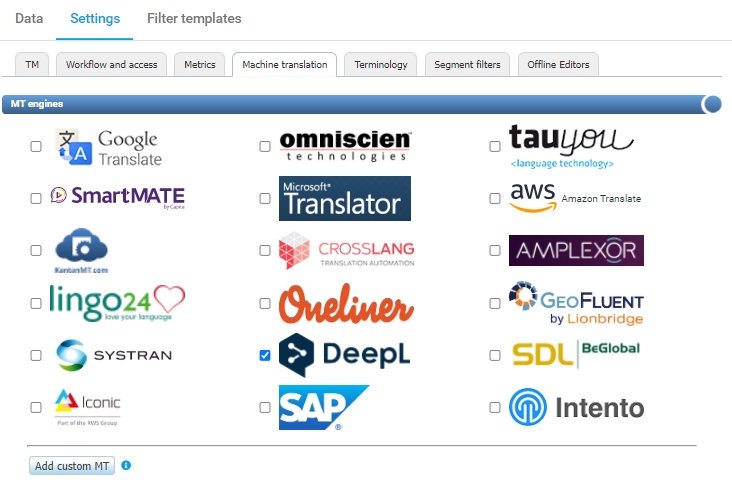Machine translation
Machine translation engines are third-party systems for automatic translation that are not standard components of a TMS.
A company that wants to use MT needs to have an account with an MT provider or configure a custom engine. Only then is it possible to connect the MT engine to TMS via an interface.
In TMS you mostly use it in combination with post-editing service to combine the advantages of both options: the speed and ability of MT engines to quickly handle large volumes of text with the skill and sensitivity of trained linguists.
As a result, it is important to choose a TMS that offers a range of fully managed engines from leading MT providers. In addition, you should be able to choose more than one engine, because you may decide to use one for a particular language pair or domain and another for a different one.
For more information on machine translation performance for different language pairs and content, consult the Memsource Machine Translation Report or the State of Machine Translation report by Intento.

What you should also note is the ability to choose an MT hub (e.g. Intento) or the option to add your custom MT (e.g. the one you have created yourself or the one developed by a third-party provider).
After you decide on an MT engine or engines, all you need to do is create an account with a given provider, subscribe to a selected plan, and get an authentication key for CAT tools to be copied to a relevant place.

You should also decide how this MT engine will work on top of your Translation memory (TM). An MT engine is supposed to fill in the blanks, while you leverage your existing resources from previous human translation.

“A great benefit of using MT in a TMS is that you use its secure version in comparison to the free web-based tool. Your texts should never be stored or used by an MT provider to improve its engine - read the MT provider’s Terms and Conditions to ensure that.
In addition, while working in XTM, you can translate all supported file formats with an MT engine, and not only a few available from browser (e.g. MS Word or PowerPoint).